Olympus E-620
-
-
Written by Gordon Laing
Olympus E-620 lenses
The Olympus E-620 employs a Four Thirds lens mount and is compatible with the complete range of Four Thirds lenses which includes models from Olympus, Sigma and Panasonic / Leica. All these lenses are designed from the ground-up for DSLR use and many offer superb quality.
 |
Like other Four Thirds DSLRs, the E-620’s sensor size effectively reduces the lens field of view by two times, so the 14-42mm kit zoom delivers an equivalent of 28-84mm, while the 25mm pancake lens becomes a standard 50mm. The coverage with the 14-42mm can be seen below.
Olympus E-620 coverage with Zuiko Digital 14-42mm kit zoom | ||
 |  | |
14-42mm at 14mm, f8 (28mm equivalent) |
14-42mm at 42mm, f8 (84mm equivalent) | |
Depending on your region, the E-620 will typically be available body alone, or in one of two kits with either the 14-42mm by itself, or the 14-42mm plus the 40-150mm.
 |
While most E-620’s will be sold in one of the above kits, an interesting alternative – or additional – lens for this body is the Zuiko Digital 25mm pancake. First introduced with the E-420, the 25mm pancake is a very slim prime lens measuring just 23.5mm thick and weighing 95g. This makes it much smaller and lighter than the already compact 14-42mm kit lens, while also boasting a brighter f2.8 aperture.
Mount it on the E-620 and the overall package becomes much more portable and better able to squeeze into pockets or bags. The combination may not be as tiny as when mounted on the E-420, but it’s still a compelling option for E-620 buyers – along with existing owners of E-5xx and E-4xx bodies. To find out more about this lens, see our Olympus Zuiko Digital 25mm pancake review.
Olympus E-620 image stabilisation
|
The E-620 becomes the latest Olympus body to feature built-in Image Stabilisation, and at the time of writing was the smallest body to offer the facility – it’s a key advantage over the E-4xx series which may be a little smaller and lighter, but don’t feature built-in stabilisation. Like all bodies with built-in IS, the major benefit is being able to stabilise any lens you attach (new and old, prime or zoom), although the downside compared to optical systems is not seeing the stabilising effect through the viewfinder, which can be very reassuring when composing at longer focal lengths.
Like other stabilised Olympus bodies, the E-620’s Image Stabilisation employs a Supersonic Wave Drive (SWD) motor to adjust the sensor’s position in the x and y axes, thereby allowing it to stabilise any lens you attach. Like the E-520, you can also use the IS system with non-Four Thirds lenses by manually entering their focal length; a choice of 36 focal lengths are available from 8 to 1000mm.
 |
Pressing the dedicated IS button on the rear presents the same three modes as the E-520: IS.1 applies compensation in both axes, IS.2 only compensates in the y axis for when you’re panning horizontally, and IS.3 only compensates in the x axes for horizontal panning when the camera’s turned on its side. There may not be many times you’d use this third mode and it could also be argued orientation sensors may have been able to make the switch between IS.2 and IS.3 automatically, but it’s still a considerate touch to offer it here. Olympus claims up to four stops of compensation are possible.
Stabilisation isn’t applied until you take the photo, and sadly the earlier E-520’s ability to preview the effect during Live View (by pressing and holding the IS button) appears to be absent here – presumably for over-heating or power-saving reasons. Like the E-520 though, you’ll feel and hear the camera shudder as it powers-down if IS has been enabled. This is due to the system resetting itself, although the process is more subtle on the E-620 – no bad thing as the unexpected vibration prompted many new E-520 owners to question if something was actually wrong with their camera.
To put the E-620’s IS system to the test here we photographed a scene with the 14-42mm kit lens zoomed-into 42mm. Working at an effective focal length of 84mm, conventional photographic advice would recommend a shutter speed of around 1/90 to avoid camera shake. Of course different people, not to mention different conditions result in different amounts of shake, but we found with the IS switched off, we couldn’t consistently handhold this particular shot below 1/80 without shake creeping into most of the shots.
|
Olympus E-620 with Zuiko Digital 14-42mm Image Stabilisation Mode 1 off / on | ||
 | ||
100% crop, 14-42mm at 42mm, 1/10, 100 ISO, IS off |
100% crop, 14-42mm at 42mm, 1/10, 100 ISO, IS enabled | |
Activating IS.1 allowed us to take the same shot and consistently keep it almost 100% sharp at 1/10, which corresponds to three stops of compensation over the non-stabilised shot with equivalent sharpness. Reducing the shutter speed to 1/5 though resulted in visible shake even with IS enabled, so the claims of four stops personally eluded us; indeed in other situations, we found we acheived closer to two stops of compensation. In this respect the E-620’s IS performed very similarly to the earlier E-520 in our tests.
Like that camera, our verdict on the IS remains the same: while we may not have personally achieved four stops of compensation with the E-620 in our tests, having two to three built-into a body which will work with any lens remains a highly valuable feature and one of the key selling points over non-stabilised rivals. But if you’re consistently looking for three to four stops of compensation, you may personally find lens-based stabilisation systems are more effective.
Olympus E-620 focusing
The Olympus E-620 features a brand new 7-point phase-change autofocus system which finally banishes complaints of the basic 3-point system on earlier consumer E-series bodies. The seven points are arranged in a cross (see below), with the central five being cross-type sensors.
 |
The middle three horizontal points cover roughly the same area as the 3-point systems on models like the E-520, so with the E-620 you effectively gain additional focusing points above and below the centre, along with wider points on either side.
It all adds up to a decent upgrade, and one that was long overdue. Obviously rival cameras with 9 or 11-point phase-change AF systems cover either a wider area still, or place more AF points in the same area, but most will find the E-620’s system more than adequate – so long as the action takes place behind one of the seven AF-points, the E-620 can lock-onto it, and if necessary, track it effectively in Continuous AF mode.
 |
Like the E-520 before it, the Imager AF contrast-based option in Live View allows the E-620 to enjoy an extended 11-area AF system, which along with face detection can help lock-onto subjects beyond the region covered by the traditional 7-point phase-change system. But since the Imager AF mode takes several seconds to focus and continuous AF is unavailable in Live View, this increased number of focus areas isn’t going to help in an action situation.
Certainly if you’re harbouring a fantasy of photographing moving subjects in Live View, you’d better think again. To be fair, this affects most DSLRs with Live View today, but the E-620’s tilting monitor may have had you hoping to use it to photograph, say, your child running towards you from a low angle, or celebrities arriving at an event over the heads of jostling crowds. Sadly while the articulated screen will allow you to comfortably frame the action, the Live View AF won’t be up to the job of locking onto it quickly enough – even the quickest AF Sensor option. There is of course the option of manual focusing though, which we’ll mention in a moment.
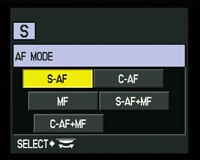 |  |
In a neat upgrade over its predecessor, the E-620 inherits the AF Focus Adjustment capabilities of the higher-end E-30. These allow you to fine-tune the AF on up to 20 lenses, with +/- 20 increments closer and further from infinity. Since the system recognises lenses based on serial number and not model alone, you can actually register different settings for multiple versions of the same lens, and the system impressively also allows you to set different values for both the long and short ends of a zoom. You can even set different values for each of the seven AF points. It’s arguably the most customisable AF adjustment system around – and therefore all the more impressive given the E-620’s price – but it can take some time to take appropriate readings and enter all the figures to make the most of it.
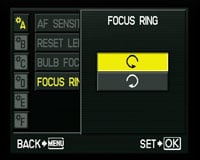 |
Most Four Thirds lenses including the kit zooms and 25mm pancake (but excluding the excellent, higher-end 12-60mm), employ motor-assisted manual focusing which can feel a little odd if you’re used to traditional mechanical systems. It also has quirks like not being adjustable unless the camera’s switched on, not to mention resetting itself to infinity when the power’s switched off (this last option can be disabled if you prefer though). It does however allow the E-620 to sport one of the more unusual features on a DSLR: the ability to reverse the direction of the focusing ring.
If manual focusing’s very important to you, we’d advise trying out a Four Thirds body first before buying as you may not get on with the implementation. That said, it’s possible to manually focus easily and fairly accurately with the E-620’s optical viewfinder (indeed it’s a little easier than the E-520 due to the slightly larger view), while the magnified option in Live View allows you to get it absolutely spot-on.
For more details on the E-620’s auto-focusing options in Live View, see the Live View section in our Design page.
Olympus E-620 metering and exposures
The Olympus E-620 offers the same five metering modes as the E-520: 49-zone Digital ESP, Center-weighted, and the choice of three spot-metering options. Along with normal spot-metering, the additional HI Spot and SH (Shadow) Spot modes are designed for scenes dominated by large areas of light and dark respectively; these modes then deliberately over and under-expose respectively to compensate.
 |
 |
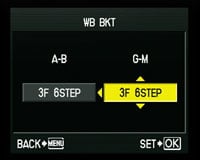 |
The shutter speed range is the same as the E-520 too: 1/4000 to 60 seconds plus a Bulb option that’s adjustable up to 30 minutes. Exposure compensation is still available in a wide range of +/-5EV, although beyond +/-3EV, it’s expressed numerically.
Exposure bracketing is available but fairly basic with three frames up to 1EV apart – so while it’s fine for getting the right exposure, it’s not sufficiently flexible for automated HDR work. The E-520 also offers White Balance and flash power bracketing. New to the E-620 over the E-520 is a multiple exposure option, although only with two frames to the E-30’s four.
Olympus E-620 anti dust
In a DSLR market where anti-dust facilities are becoming the norm, it’s important to remember Olympus was the first to truly address the problem. So the E-620 becomes the latest Olympus DSLR to employ the SuperSonic Wave Filter (SSWF). This vibrates a filter in front of the sensor in an attempt to shake-free any foreign particles and has proven more effective than rivals.
 |  |
Dust reduction takes place every time the camera powers-up and when entering and exiting Live View or activating the pixel mapping function – the process is indicated by a brief flicker of the SSWF light to the side of the mode dial. The screengrabs shown to the left only appear if there’s no card present in the camera.
Following our usual DSLR torture-test we left the E-620 face-up without a lens, inside and outside for ten minutes each; we can’t know how much dust entered the body during this time, nor even how much was present to start with, but we know such a process would result in dust being a problem for most models. We then activated the SSWF by powering the camera on and off twice, with it facing down. Note we also tested the Canon 500D / T1i and Nikon D5000’s anti-dust capabilities at exactly the same time, and while we again can’t know how much dust entered each, the consistent conditions allow a reasonably fair comparison – see our reviews of those models.
We then took a series of photos at every aperture setting of a plain white surface at close range with the Zuiko Digital 14-42mm zoomed-in and manually focused to infinity. Dust marks normally become most apparent at the smallest apertures (eg f16 and f22), but it’s also important to test at more common apertures.
Olympus E-620 dust example at f22 / f22 with levels | ||
 | 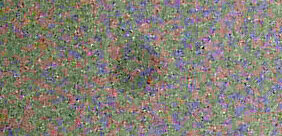 | |
100% crop, 14-42mm at 42mm, f22 |
100% crop, 14-42mm at 42mm, f22, with levels | |
At f22 the image appeared to be completely clean, but upon very close examination, we spotted a handful of extremely faint marks – the worst is cropped and pictured above left at 100% and you can see it really is barely visible. To make it clearer we’ve applied an extreme Levels adjustment in Photoshop and pictured the result above right. Feel free to download the first image onto your own computer to apply the Levels and see for yourself that it really is the same area.
This is a similar result to earlier Olympus DSLRs and remains the best we’ve experienced of all anti-dust systems. As we’ve said before, this result may be as much to do with the distance between the filter and sensor as it is with the effectiveness of the filter itself, but either way, dust marks are rarely if ever going to be an issue on the E-620, which is something you can’t say for many DSLRs.
Olympus E-620 sensor and processing
The Olympus E-620 is equipped with the same 12.3 Megapixel Live MOS sensor as the higher-end E-30, which gives both cameras two extra Megapixels over the earlier E-520. Like all Olympus DSLRs, the sensor conforms to the Four Thirds standard and therefore measures 17.3x13mm. It generates 4:3 aspect ratio images which are narrower than the traditional 3:2 aspect ratio of other DSLRs, although a variety of cropped aspect ratios are also available.
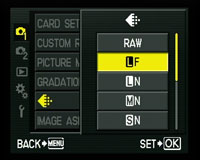 |  |
The maximum resolution is 4032×3024 pixels, giving the E-620 around 400 more pixels horizontally and 300 vertically than the E-520 – or around an extra inch and a half diagonally when printing at 300dpi.
As before, there’s the choice of no fewer than six lower resolutions and four JPEG compression options for each including a very mild Super Fine setting.
Like the E-520, RAW files can be recorded with 12-bits of data and lossless compression, either by themselves or accompanied by a JPEG – you can also choose whether the JPEG is Large Fine, Large Normal, Medium Normal or Small Normal. There’s also a custom option which lets you choose whether both the RAW and JPEG files are deleted when you OK the erase button, or just one of them. Large Fine JPEGs typically measure 5.7MB each, Large Super Fine JPEGs around 8.2MB, while RAW files weigh in around 14MB each.
Like the E-30, you can also switch between a variety of aspect ratios, although there’s four choices here compared to nine on the higher-end model. The E-620 offers 4:3, 3:2, 16:9 and square 6:6 aspect ratios, again with the full choice of lower resolution versions and different compression settings.
There’s no frame markings in the viewfinder though, so to see the actual shape that you’ll be recording, you’ll need to switch to Live View; the 6:6 option does come close to the edge of the widest focusing points though. Interestingly if you shoot with the optical viewfinder, the image is recorded in the full 4:3 aspect ratio, but cropped during playback to the desired setting.
 |  |
Like the E-30, sensitivity runs between 200 and 3200 ISO in Auto, with a 100 ISO option available in manual selection.
The E-620 offers noise reduction on long exposures and like recent E-series DSLRs, there’s also four different noise filter settings, Off, Low, Standard and High.
Image processing is applied by the same TruePic III+ image processor as the E-30, which is a newer version than the TruePic III on the E-520.
 | |
Alongside Auto White Balance and eight presets, there’s a custom mode and the option to dial in an exact colour temperature. You can also fine-tune the white balance in the amber / blue or green / magenta directions, or apply adjustments as part of a white balance bracketing option. White balance adjustments can also be previewed in Live View.
Contrast, sharpness and saturation are applied using a choice of Picture Modes: Vivid, Natural, Muted, Portrait, Monotone and a Custom option. In the colour Picture Modes, contrast, sharpness and saturation can all be adjusted on a scale of -2 to +2; the Custom mode adds a Gradation option. In the Monotone mode you can apply colour effects including a sepia tone, or simulate the use of colour filters including yellow, orange, red and green.
 |
 |
 |
We used the default Natural setting which is more refrained than the Vivid mode and better-suited to subsequent enhancement in software. If you intend to use JPEGs straight from the camera though, the Vivid mode delivers punchier output without going over the top.
Also following recent models, the E-620 additionally offers a choice of Gradation options: along with the default Normal there’s High Key and Low Key settings which extend tonal graduations for subjects which are mostly highlighted or in shadow respectively. The Auto Gradation option activates the E-620’s Shadow Adjustment Technology, or SAT for short.
SAT divides the image into regions and adjusts the brightness in each which Olympus describes as being effective for compositions with very bright or dark areas. Note: if you’ve set the Function key to enable Face Detection, then the Gradation will also set to Auto (handy for backlit portraits), but if you directly enable Face Detection using the screen controls, it won’t.
As with the E-520, we found SAT uses slightly quicker exposures to better-protect highlight areas, while artificially boosting shadow areas. The results can be fairly effective depending on the subject, although like all brightness-boosting technologies, there’ll be more visible noise in shadow areas.
 |
The E-620 also inherits the E-30’s Art Filters, which Olympus bills as a headline feature. These six filters apply special effects to the image and go beyond the usual sepia or monochrome options on most cameras – although it has to be said, there’s nothing which can’t be done with post-processing in software afterwards. The key here is being able to apply the filters without the need to touch a computer, which could be handy if you’re software-phobic or printing direct from the card.
To apply an Art Filter, simply turn the mode dial to ART / SCN and choose the desired effect: like the E-30 you have the choice of Pop Art (which greatly saturates colours), Soft Focus, Pale and Light Colour, Light Tone, Grainy Film (which turns the image to monochrome with a grainy effect) and Pin Hole (which introduces vignetting to darken the corners and concentrate the viewer on the centre). Three appear to simply soften or mute the image, so we’ve shown examples of the three most dramatic below. You can see larger versions in our E-620 Sample Images Gallery, where the grainy effect of the Grainy Film filter is more apparent.
Olympus E-620 Art Filters | ||||
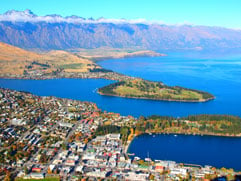 |
 |
 | ||
Pop Art Filter |
Grainy Film Art Filter |
Pin Hole Art Filter | ||
Olympus E-620 drive modes
|
The Olympus E-620 offers two continuous shooting modes: Continuous Low which shoots at one to three fps as set in the menu, and Continuous High which shoots at the camera’s top speed of 4fps; this is a slight boost on the E-520’s quoted speed of 3.5fps. Olympus quotes unlimited Large Normal JPEGs while memory remains or up to five RAW files (down from the eight of the E-520). We fitted a freshly formatted Lexar Professional UDMA 300x 4GB card and put the specifications to the test.
 |
Set to Continuous High and a shutter speed of 1/500, we fired-off 12 Large Fine JPEGs in 3.5 seconds before the camera slowed slightly; this initial burst corresponds to a speed of 3.4fps. The E-620 happily continued to fire until we ran out of memory, but at a slightly slower rate of around 3.2fps. The buffer cleared almost instantly. Switched down a notch to Large Normal mode, the shooting rate sounded more consistent, although again came up at no faster than 3.4fps.
Set to RAW mode, the E-620 captured five shots in 1.5 seconds before slowing to about 1.5fps. This initial five shot burst again corresponds to a rate of 3.4fps.
Interestingly these are pretty much the exact same figures we measured for the earlier E-520, where we commented it didn’t quite manage to deliver its quoted 3.5fps. This time round though, there’s a bigger difference between the quoted figure of 4fps and what we measured in reality. It continues to rank the E-620 at a similar level to the Canon 450D / XSi, although it should be noted both come-in comfortably faster than the 2.35fps we measured for the Sony A350.
In terms of other drive modes, there’s the choice of a two or 12 second self-timer, and two options for use with the optional RM-1 infra-red remote control, one which fires as you press the button and the other which fires after a two second delay. Like the E-520, you can also adjust the delay of a mirror-lockup between one to 30 seconds.
Finally it is possible to remote control the camera using the optional Olympus Studio software, and there’s a trial in the box. It’s not unusual to pay extra for software with these capabilities, but it should be noted Canon includes its remote control software free with every DSLR in its current range, and it also supports live view on your computer monitor.
There’s no movie mode on the E-620, so now it’s time to head straight over to our results pages.





